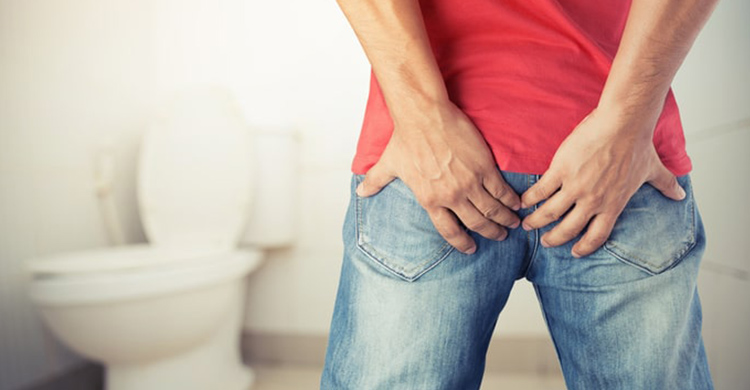
Pilonidal cyst is an abnormal pocket in the skin that usually contains remnants of hair and skin. This type of cyst often occurs near the tailbone at the top of the buttock cleft. When infected, the resulting abscess can often cause pain. However, the cyst can be drained through a small incision or removed through surgery.
This condition most commonly occurs in men rather than women, and it tends to recur easily. People who sit for prolonged periods, such as truck drivers, are known to have a higher risk.
Causes of Pilonidal Cyst
It is not exactly known what causes a pilonidal cyst. This condition is suspected to be congenital, arising from embryological cells being in the wrong place during early development or due to repeated trauma.
Another possibility is that small groups of hair and dead skin cells trap bacteria in the pores of the upper buttock skin, forming a sinus that grows into an abscess. The abscess forms under the skin (subcutaneous) and causes scar tissue that can become repeatedly infected.
However, some babies are also born with a small indentation just above the buttock crease called a sacral dimple. If infected, the sacral dimple can develop into this condition.
Risk Factors for Pilonidal Cyst
Pilonidal cysts are more common in young men. Other risk factors include:
- Obesity.
- Having a lot of hair near the buttock fold.
- The presence of small holes or sinuses in the tailbone area right at the top of the fold between the buttocks.
- Wearing tight clothing.
- Rarely bathing.
- Sitting for too long.
- Genetics.
- Having had a pilonidal cyst before.
Symptoms of Pilonidal Cyst
Most sufferers rarely experience symptoms. If symptomatic, the signs may include:
- Pain.
- Redness of the skin.
- Drainage of pus or blood from holes in the skin.
- Foul odor from the draining pus.
- Pain when pressed.
- Warm to the touch.
- Fever.
Diagnosis of Pilonidal Cyst
Generally, doctors diagnose this disease through physical examination. Ancillary examinations such as X-rays are rarely needed. This cyst can be distinguished by the characteristics of its location, namely in the upper buttock fold.
Treatment of Pilonidal Cyst
Surgery is the common treatment for pilonidal cyst. The type of surgery performed depends on the size and severity of the infected cyst. Surgery may include:
- Incision and drainage, which involves making an incision and draining the contents of the cyst.
- Larger cysts or abscesses are incised more widely, then stitched to close the cavity.
- Cyst removal, a procedure performed by removing all or part of the cyst.
There are several ways to treat this condition at home. Some of these methods include:
- Sitting in a warm bath up to the hips to reduce pain and prevent worsening of the cyst.
- Taking vitamin C, zinc, and vitamin A supplements to aid in the healing process.
- Using essential oils to soothe the cyst and help fight infection.
- Using a cushion under the buttocks for comfort while sitting.
- Regular exercise to improve blood flow and aid in the healing process.
Although it can be cured with surgery, the risk of the cyst recurring remains possible. Recurrence may occur if there is extensive scar tissue or sinuses.
Complications of Pilonidal Cyst
When a chronically infected pilonidal cyst is not treated properly, sufferers are at a slightly higher risk of developing a type of skin cancer called squamous cell carcinoma.
Prevention of Pilonidal Cyst
One can prevent the formation of pilonidal cysts by controlling its risk factors, including:
- Keeping the buttock area clean and hair-free.
- Maintaining an ideal body weight.
- Avoiding tight clothing.
- Sitting with proper posture.
- When sitting for long periods, using a special cushion under the tailbone to reduce pressure on the area.




